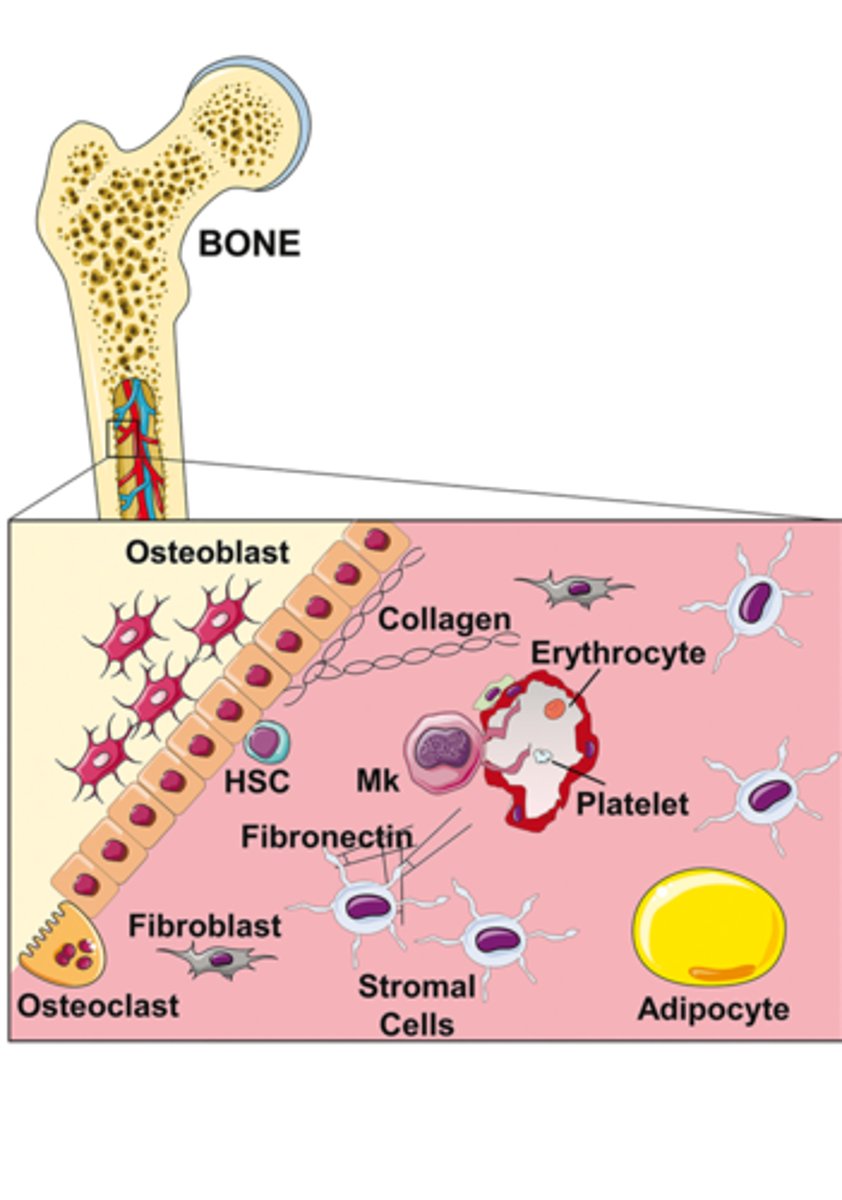⭐ Topic 4: Hematopoiesis
1/30
There's no tags or description
Looks like no tags are added yet.
Name | Mastery | Learn | Test | Matching | Spaced |
|---|
No study sessions yet.
31 Terms
What is hematopoiesis?
Hematopoiesis is the process of blood cell formation in the bone marrow.
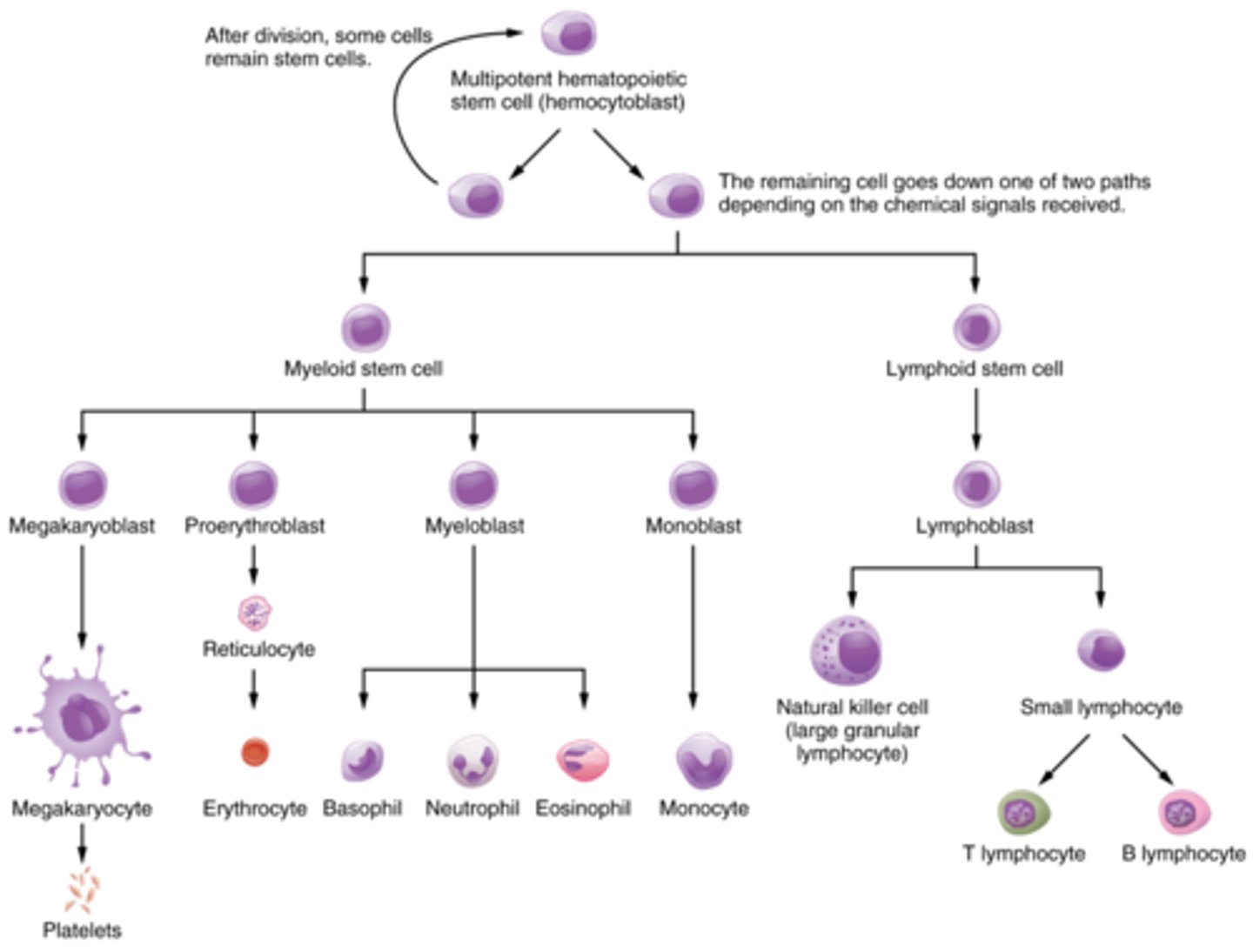
How does hematopoiesis maintain homeostasis?
by balancing proliferation, differentiation, and apoptosis.
What is the process responsible for the replacement of circulating cells?
Hematopoiesis is responsible for the replacement of circulating cells through the proliferation of precursor cells that retain mitotic capability.
What governs the process of hematopoiesis?
multiple cytokines.
Where does hematopoiesis take place?
specialized microenvironment within the bone marrow
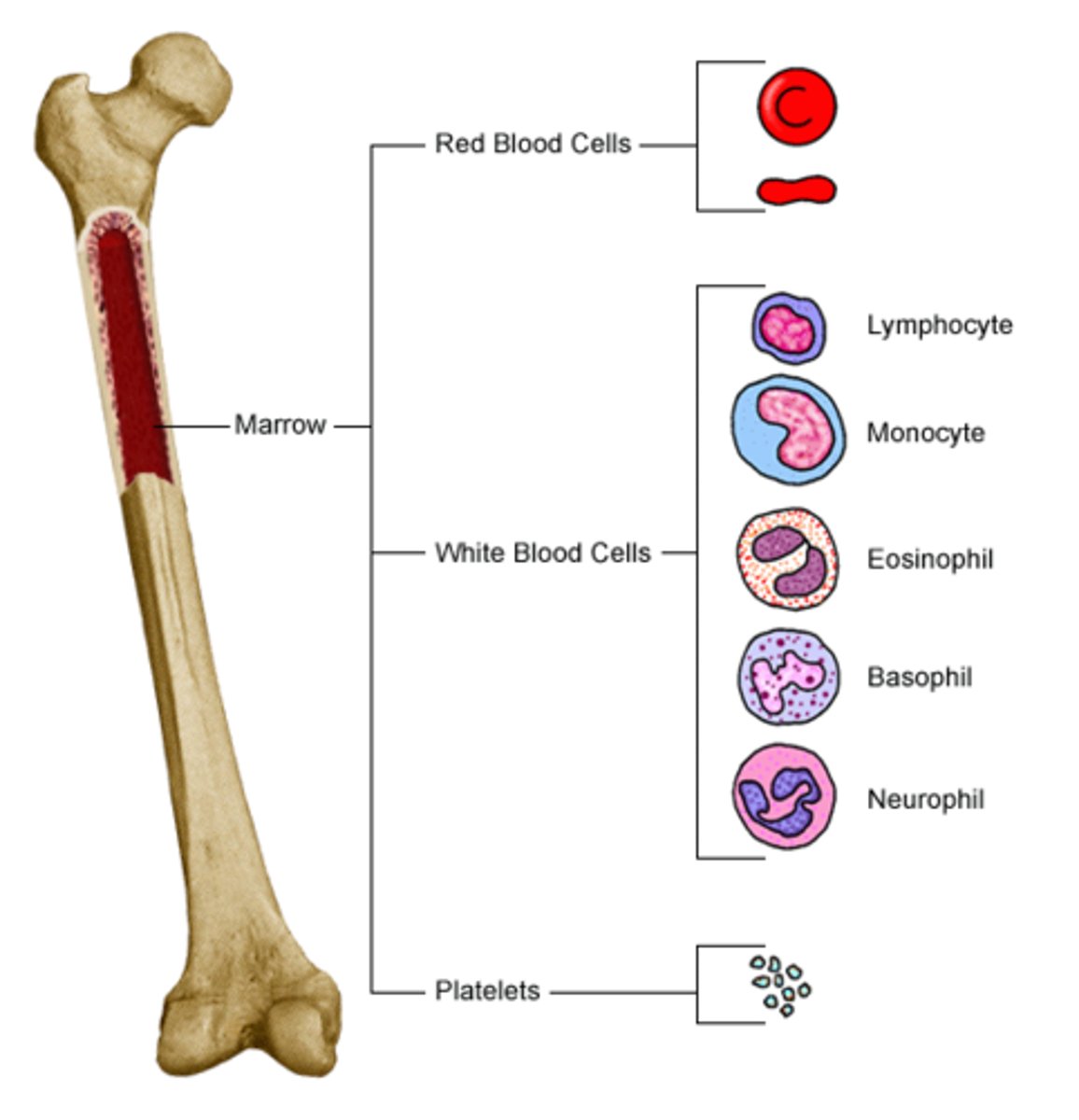
Why is hematopoiesis important?
blood cells are short-lived and need constant replacement to ensure proper immune function, oxygen transport, and clotting.
How does hematopoiesis respond to stress?
rapidly increase production in response to stress, such as infection or blood loss.
What are Hematopoietic Stem Cells (HSCs)?
starting point of all blood cells in the body.
What is the hierarchy of differentiation in hematopoiesis?
HSCs → Progenitor Cells → Maturing Cells → Mature Blood Cells.
What is differentiation in hematopoiesis?
the process that generates diverse cell populations and results in the appearance of different properties in initially equivalent cells
What does commitment mean in hematopoiesis?
when two cells derived from the same precursor take separate routes of development.
What is maturation in hematopoiesis?
the process from commitment to when the cell has acquired all of its characteristics.
What are circulating cells in the context of hematopoiesis?
Circulating cells are mature cells with a limited lifespan, terminally differentiated, and incapable of mitosis (except lymphocytes, which can expand when in contact with an antigen).
What is the hierarchy of hematopoietic cells?
Hematopoietic Stem Cells (HSCs) → Progenitor Cells → Maturing Cells
What is the characteristic of progenitor cells in hematopoiesis?
limited self-renewal and are lineage-restricted.
What happens to maturing cells in hematopoiesis?
morphologically identifiable and lose their proliferative ability
What are the characteristics of Hematopoietic Stem Cells (HSCs)?
↪ multipotential (can form all blood cell types)
↪ self-renewing
↪ mostly quiescent (not actively dividing).

How can Hematopoietic Stem Cells (HSCs) be identified?
HSCs are identified using cell surface markers:
↪ CD34+ (stem cell marker)
↪ CD90+ (Thy-1)
↪ CD133+
Negative for lineage-specific markers (Lin-).
↪ They cannot be recognized by morphology alone, but are identified using flow cytometry (FACS).
What are the two Hematopoietic Stem Cell (HSC) niches in the bone marrow?
↪ Osteoblastic niche: Supports and maintains quiescent HSCs.
↪ Vascular niche: Provides signals for activation, proliferation, and differentiation.

What are the two main progenitor pathways in hematopoiesis?
↪ Common Lymphoid Progenitor (CLP): Gives rise to lymphocytes (T, B, and NK cells).
↪ Common Myeloid Progenitor (CMP): Gives rise to myeloid cells (granulocytes, monocytes, RBCs, platelets).
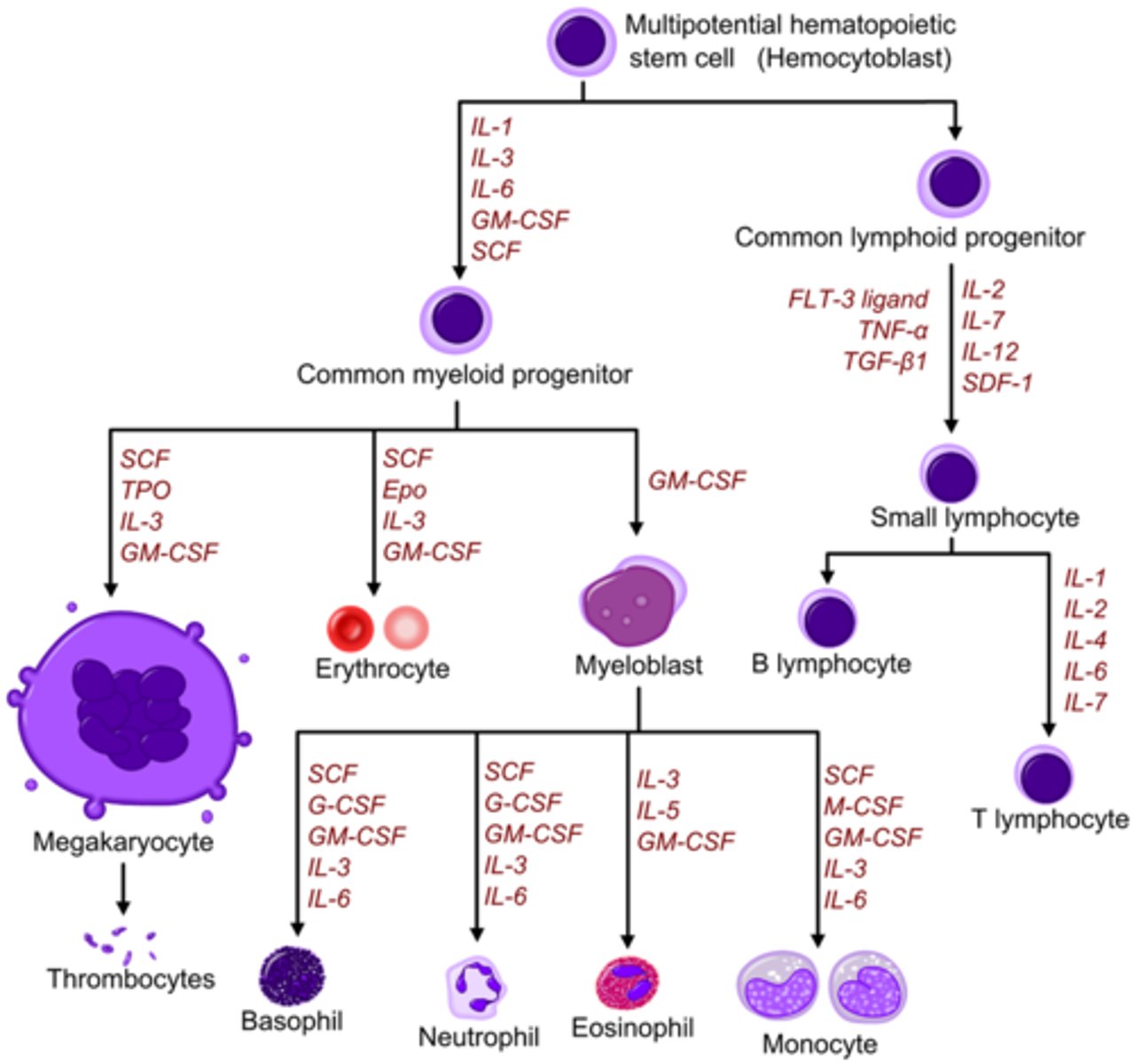
How are maturing cells identified in hematopoiesis?
Maturing cells are morphologically recognizable, and the earliest recognizable cell is a "blast" (e.g., lymphoblast, myeloblast, megakaryoblast).
What characteristics are used to classify maturing cells?
Maturing cells are classified based on their nuclear and cytoplasmic characteristics, which help determine their lineage and development stage.
What role do cytokines play in hematopoiesis?
Cytokines regulate hematopoietic cell survival, proliferation, and differentiation.
How do growth factors (GFs) act in hematopoiesis?
paracrine, autocrine, and juxtacrine modes.

What are early-acting (multilineage) cytokines?
Early-acting cytokines include SCF (Stem Cell Factor), Flt3 Ligand, and IL-3, GM-CSF.
What are lineage-specific cytokines in hematopoiesis?
↪ EPO (Erythropoietin) – for RBC production.
↪ TPO (Thrombopoietin) – for platelet production.
↪ G-CSF, M-CSF – for granulocyte and monocyte growth.
How do cytokines activate signaling pathways in hematopoiesis?
Cytokines bind to specific cell surface receptors, which then activate intracellular signaling pathways.
What are the two major types of hematopoietic growth factor receptors?
↪ Receptor Tyrosine Kinases (RTKs) – direct activation (e.g., SCF, FL).
↪ Cytokine receptor superfamily – require intracellular kinases (e.g., IL-3, IL-5).
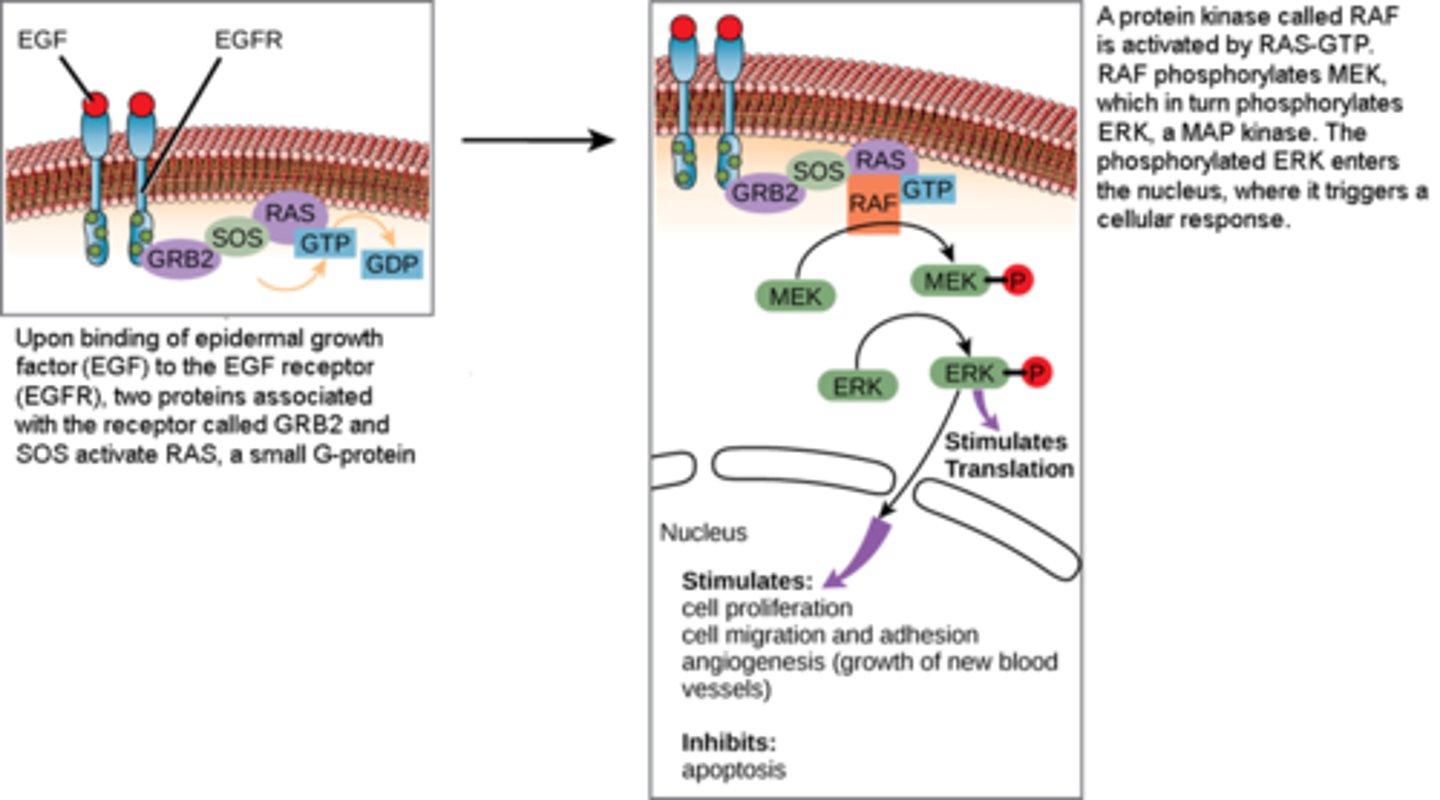
How do most hematopoietic cytokines signal through the JAK-STAT pathway?
↪ Cytokine binds to the receptor.
↪ JAK kinases activate STAT transcription factors.
↪ STAT proteins enter the nucleus and regulate gene expression.
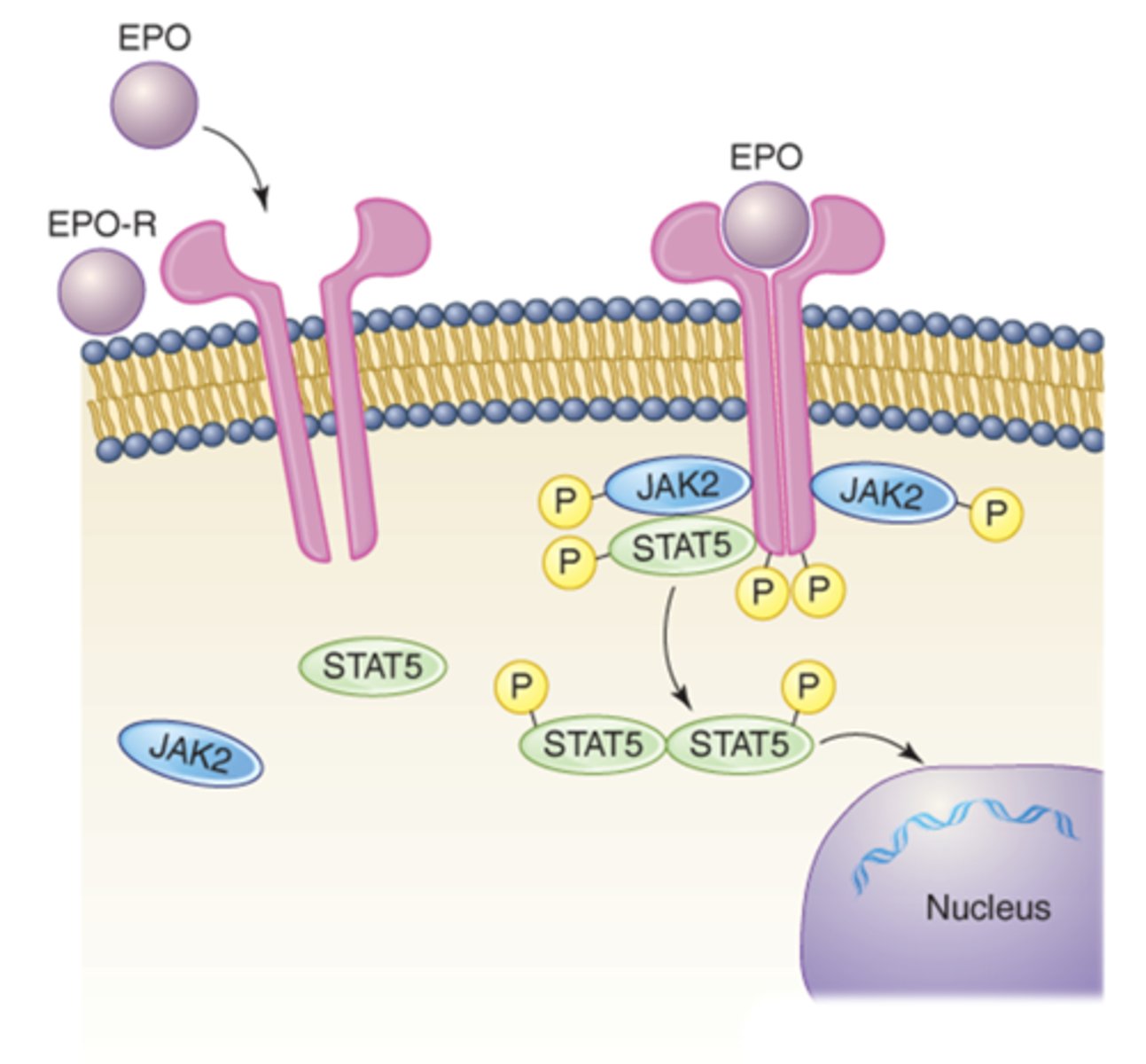
What is the hematopoietic microenvironment?
The hematopoietic microenvironment provides support for blood cell development and includes stromal cells, extracellular matrix, cytokines, and adhesion molecules.
What types of cells and molecules are included in the hematopoietic microenvironment?
↪ Stromal cells (fibroblasts, osteoblasts, adipocytes).
↪ Extracellular matrix (collagen, fibronectin).
↪ Cytokines and adhesion molecules (SDF-1, VCAM-1).
